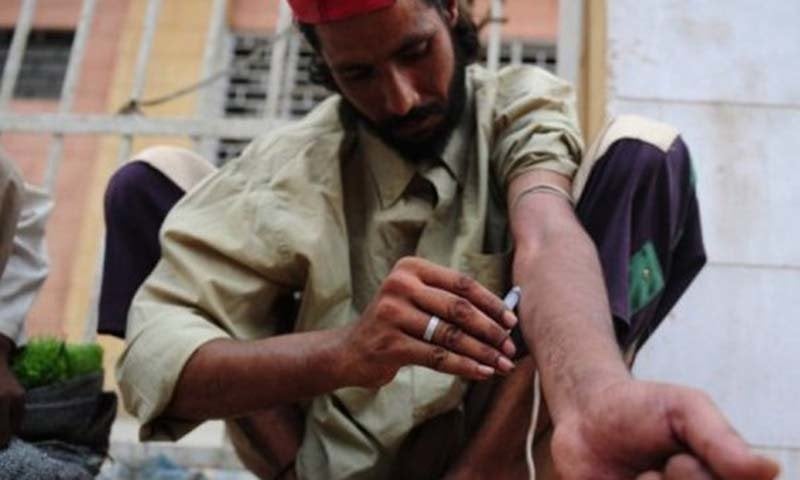
ISLAMABAD: Drugs are the real weapon of mass destruction, says Cristina Von Sperling Afridi.
A couple of years back, Afridi’s only child, Karim Khan, died in a drug-related incident when he was just 19.
His death drove her to devote herself to the issue and create awareness among parents, educationists and the community at large to try to help prevent other families from having to feel her pain. She founded Karim Khan Afridi Welfare Foundation (KKAWF) with a mission to disseminate knowledge on the adverse effects of drugs on individuals, families, and society.
Childhood abuse ups drug addiction risk in adulthood
To break taboos that exists around drugs and to enable people to reach out for help, she said KKAWF is focusing on teenagers and aims to be a catalyst for the youth and the community they live in, by engaging federal and provincial governments to take up the task through better policies to manage and control drug production, prevention and use.
June 26 is marked as the International Day against Drug Abuse to raise awareness on the problems caused by the vice.
“The youth needs desperately to be engage and the KKAWF is looking to provide this trough their four Pillars which are, drug awareness, environment, sports and civic sense,” Afridi told The Express Tribune. She added that this was a battle that cannot be won alone. “It is necessary that mothers and families in general join hands because it could be anyone’s child, and drug users need help. With combined effort, they could be brought normalcy and become active member of society,” she said.
According to the Anti Narcotics Force, Pakistan has seven million drug addicts, three million of whom are concentrated in Khyber-Pakhtunkhwa. Rehabilitation centres have been operating for decades, such as Dost Foundation in Peshawar, which has a capacity of 700 beds and also does work in prisons, schools and communities, but options are still very limited. In addition, rehab centres are functioning without set criteria or government supervision. Patients are sometimes mistreated, and stories of blackmailing of families are commonplace.
‘Drug’ use: The misunderstood herb
Drug abuse is an epidemic, and according to a report published in Foreign Policy Magazine in August 2015, drugs kills an alarming 700 people per day in Pakistan, which would invariably rise if essential measures and durable initiatives are not taken.
The government lacks detailed research on drug use and information on prevalence and patterns among those aged 15 to 64. The last such survey was conducted by the United Nation Office on Drugs and Crimes (UNODC) in 2012 and was released in 2013. It included the use of plant-based drugs and medical prescription drugs, particularly cannabis, prescription opioids, tranquillisers, sedatives, and opiates such as heroin and opium. It found that drug use in Pakistan is highly differential by gender. The national population prevalence is a combination of very high levels of use of these substances among men, and generally low levels of use among women, offset by considerable misuse of prescription opioids, tranquillisers and sedatives among women.
Although Pakistan is a country with a large youth population, drug use is more common among those between the ages of 25 to 39 rather than the 15 to 24 bracket.
Of the 6.7 million users of any illicit substance estimated in 2012, around 4.25 million were considered drug dependent.
Heroin use at 20-year high in U.S. drug "epidemic", U.N. says
In addition to drug use, there are the warning signs for a rapid expansion of the HIV epidemic. Survey results detected a high prevalence of HIV risk behaviours among intravenous drug users
Meanwhile, non-medical use of prescription drugs has always remained a challenge for health administrators. The National Ministry of Health Reforms and provincial Health Departments have never undertaken any scientific study or research to identify the gravity of non-medical use of prescription drugs and its consequences.
Published in The Express Tribune, June 26th, 2016.




























































COMMENTS (1)
Comments are moderated and generally will be posted if they are on-topic and not abusive.
For more information, please see our Comments FAQ